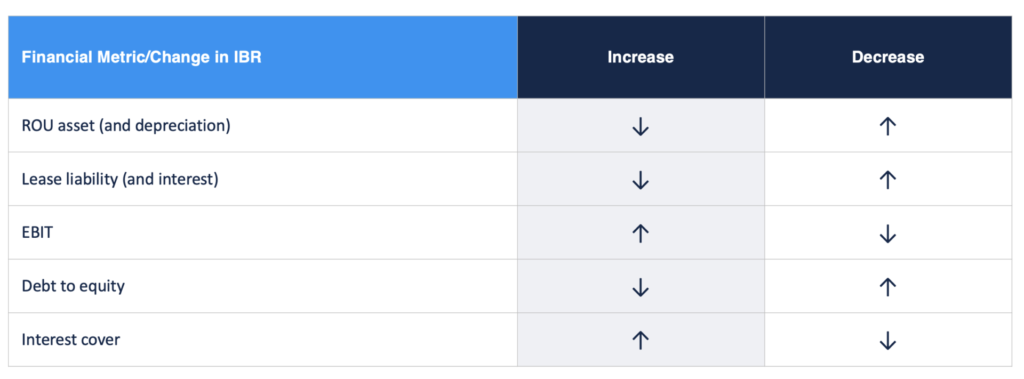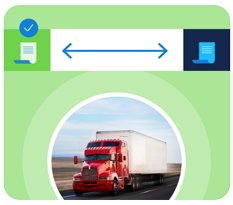You’ve probably heard the saying “nothing is constant but change”. As the financial climate expands and contracts, your lease accounting controls and governance have to adjust as well. One of the fundamental metrics is the cost of capital, documented in the Incremental Borrowing Rate (IBR) that applies to your leases. Given the ongoing changes in the markets, setting IBRs for leases isn’t a one-time action. In this article, we’ll cover how to set your IBR and then discuss how and when to evaluate your IBRs in light of shifts in market rates.
International Accounting Standards require lessees to establish a discount rate for establishing the present value of all future lease payments. IFRS 16 states “The lease payments shall be discounted using the interest rate implicit in the lease, if that rate can be readily determined. If that rate cannot be readily determined, the lessee shall use the lessee’s incremental borrowing rate.” It goes on further to define the IBR as “The rate of interest that a lessee would have to pay to borrow over a similar term, and with a similar security, the funds necessary to obtain an asset of a similar value to the right-of-use asset in a similar economic environment.” Note that ASC 842 uses similar wording. In many leases, the rate is not clearly determinable and hence the standards allow IBRs to be used.
How do you determine an IBR?
Interest rates can have a major impact on balance sheet values. With that in mind, setting IBRs is an area where significant judgement is required and where there is a vast amount of uncertainty for accounting professionals. To arrive at a final IBR, several factors need to be considered, including:
-
-
- the organisation’s borrowing ability;
- government bond rates (representing a risk-free rate);
- property yields;
- currency (or country);
- class of asset and security;
- lease repayment profile and term.
- adjustments to the overall discount rate, to ensure its appropriate for the asset concerned.
Many organizations have Treasury departments who will be able to provide an appropriate IBR. According to guidance from Deloitte, “Companies’ existing processes and data for determining these rates will … not necessarily be appropriate for determining an IFRS 16 IBR and so, in our view, there is a need to start with a fresh approach.” IBRs may not be equivalent to interest rates that an organization uses for other purposes, or even used for its other accounting calculations, hence the need for a suitable rate to be determined.
Once the IBR is determined, the different components of leases including Right of Use (ROU) Assets and the corresponding lease liabilities are calculated. Similarly, the effects on the Profit and Loss Statement will be determined by the value of the IBR.
How and when to evaluate your IBRs
1. External factors
As other country’s central banks have done, the Reserve Bank of Australia began aggressively tightening monetary policy in 2022 — official cash rates were lifted by increments of 25-50 basis points, putting pressure on businesses and individuals alike.
It is therefore appropriate that Incremental Borrowing Rates are reviewed (in line with IFRS 16 and ASC 842), when there are changes to interest rates, particularly in this current environment.
2. Lease-related factors
As leases change in their structure (such as the terms and/or conditions, scope, or lease duration), IBRs need to change accordingly. Some leases may be long-term in nature (5-10 years), and hence there may not be any need to adjust them now. However, as those long-term leases change or come up for renewal, changes to the IBRs need to be considered.
Use this opportunity to improve metrics
As always, opportunities are present, even in times of adversity. For organizations that need to determine their lease liabilities, changes in IBRs can present significant opportunities to improve an organization’s balance sheet position. A well-structured strategy is critical to ensure that key financial metrics are optimized, especially in this rapidly changing economic environment, where interest rates could continue to increase significantly in the short-term.
Although IBRs aren’t something that many organizations regularly review, they can have a significant material impact on items such as financial ratios, the balance sheet as well as other commercial aspects such as staff bonuses and banking covenants. This should not merely be seen as a compliance matter, but as an opportunity to improve an entity’s financial position and metrics.
The table below reflects some of the effects on selected financial metrics due to changes in the IBR:

Reporting & disclosures
The changes to IBRs and the assumptions that go into it need to be reported, especially for large public organisations. This is the output of the work to determine and recalculate the new IBRs. What to report can be difficult – including assumptions on the appropriateness of the rates, what the rates are for various asset classes (absolute or ranges), etc. It’s important to reach agreement across senior management and key stakeholders, including external parties such as auditors, as to what is reported.
Action summary
In closing, setting IBRs isn’t a one-time action. As overall monetary policy and lending rates change, they will drive changes in the cost of capital and therefore your IBRs. Make sure that your IBRs are connected to these market shifts to keep your balance sheet accurate and ensure other commercial factors are met.
See this as an opportunity to go beyond compliance!
For more help on this or to learn other ways to optimize your lease lifecycle, contact our sales team today.
-







